Abstract
Smith, Paul F. (University of Pennsylvania, Philadelphia) and George H. Rothblat. Comparison of pleuropneumonia-like and L-type organisms. J. Bacteriol. 83:500–506. 1962.—The content of total lipid and nonsaponifiable lipid depended upon the type of organism; the greatest amounts were found in pleuropneumonia-like organisms that required cholesterol for growth and in L-1, the L-form of Streptobacillus moniliformis. Decreasing amounts were found in nonsterol-requiring strains of pleuropneumonia-like organisms, the stable L-form of Proteus, salt-requiring L-forms, and finally, the bacterial parents of the L-type organisms. Nonsterol-requiring pleuropneumonia-like organisms could synthesize their own nonsaponifiable lipid, but sterol-requiring strains could not. Ability or inability to synthesize nonsaponifiable lipid was often carried over to the L-type organisms from the bacterial parent. More nonsaponifiable lipid was found in the sedimentable fraction (cell membrane) than in the nonsedimentable fraction (protoplasm) of both pleuropneumonia-like and L-type organisms. None of the nonsaponifiable lipid synthesized by any organism tested appeared to be 3-β-hydroxy sterol. Differences in ability of various organisms to take up cholesterol and to be lysed by digitonin were established.
Full text
PDF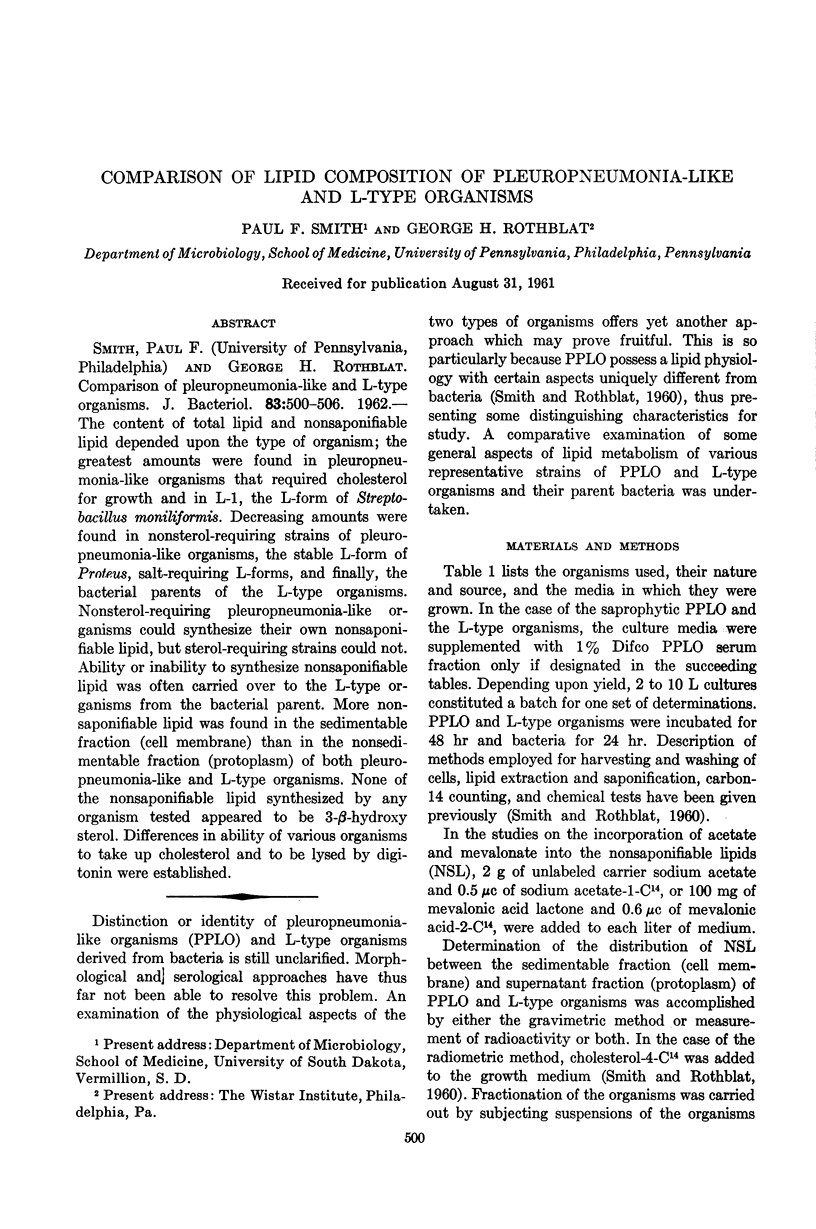
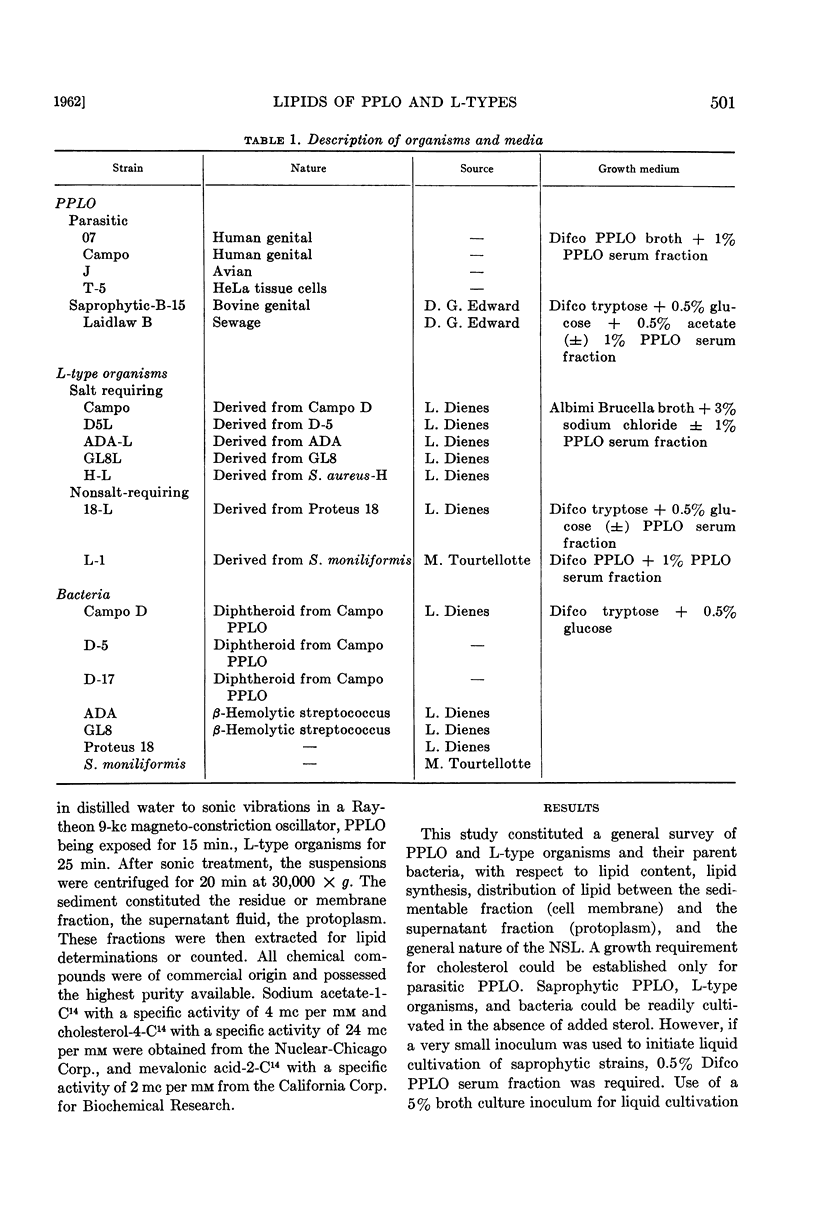
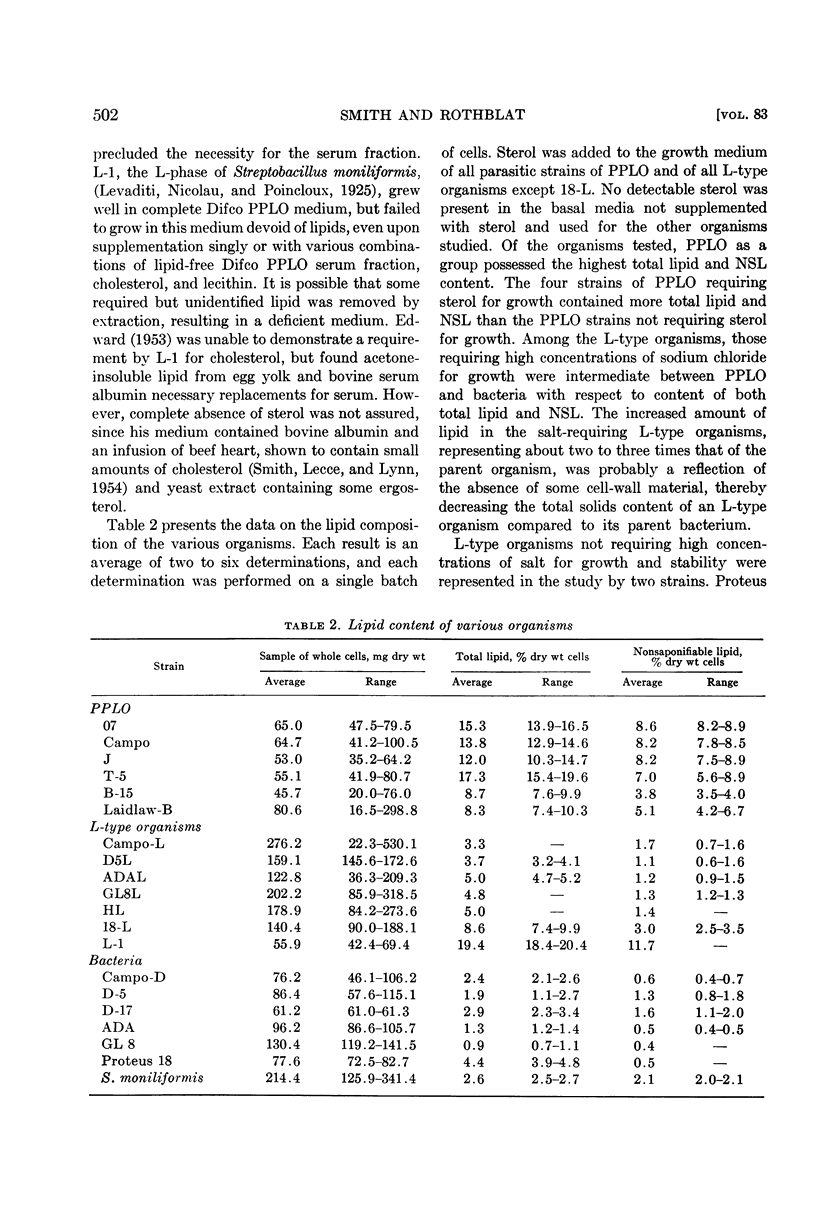
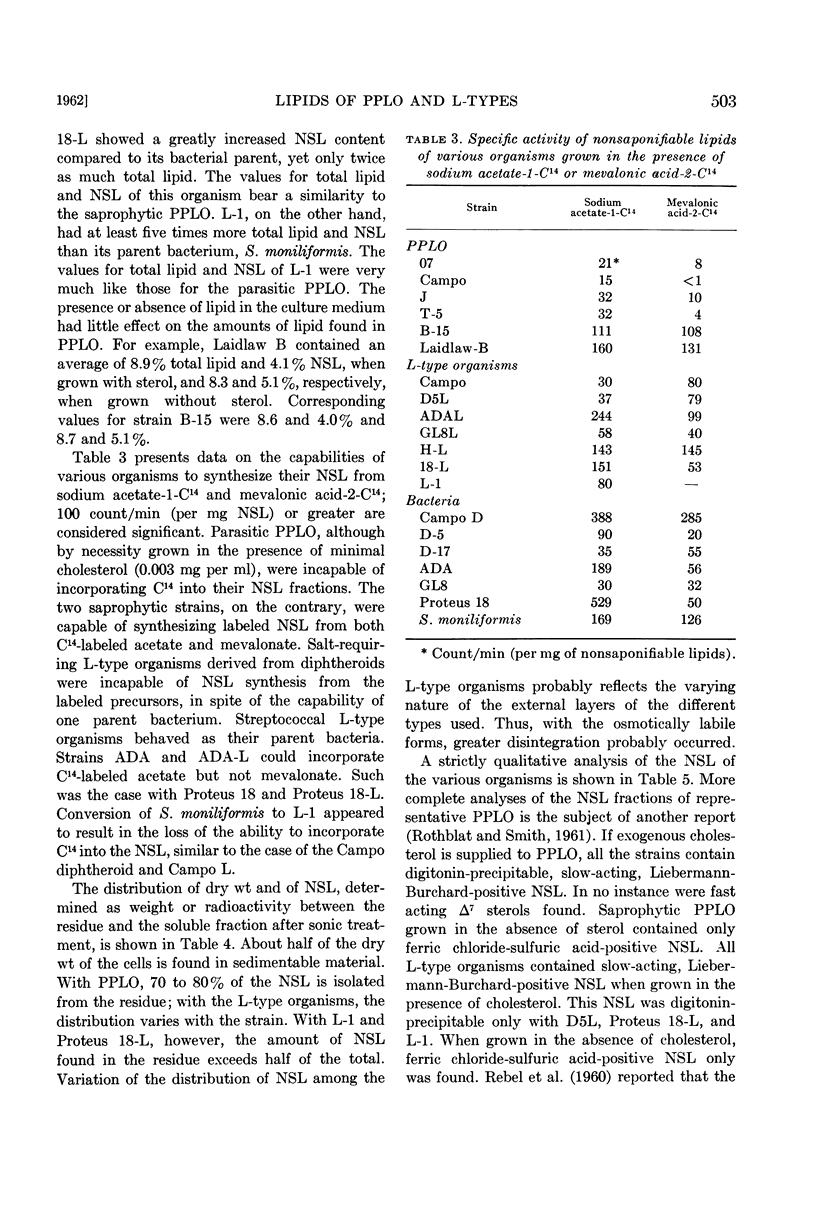
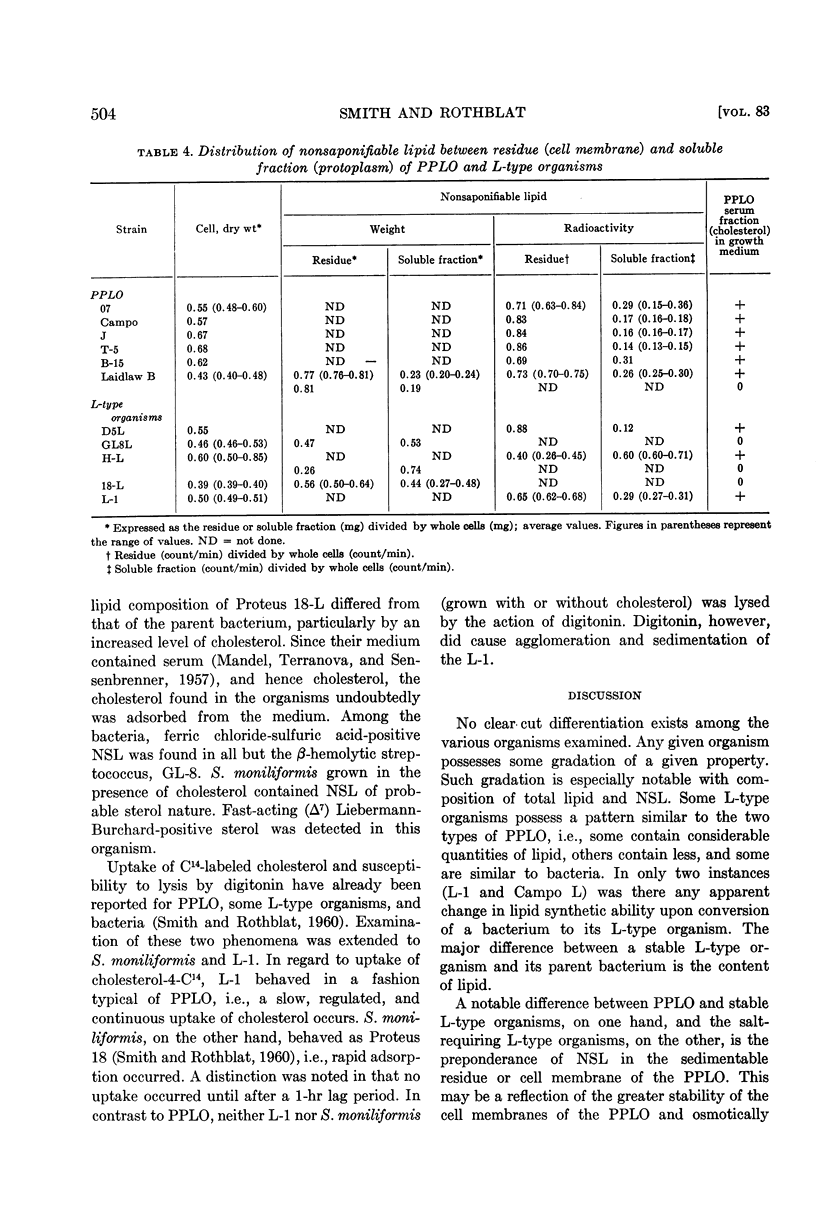
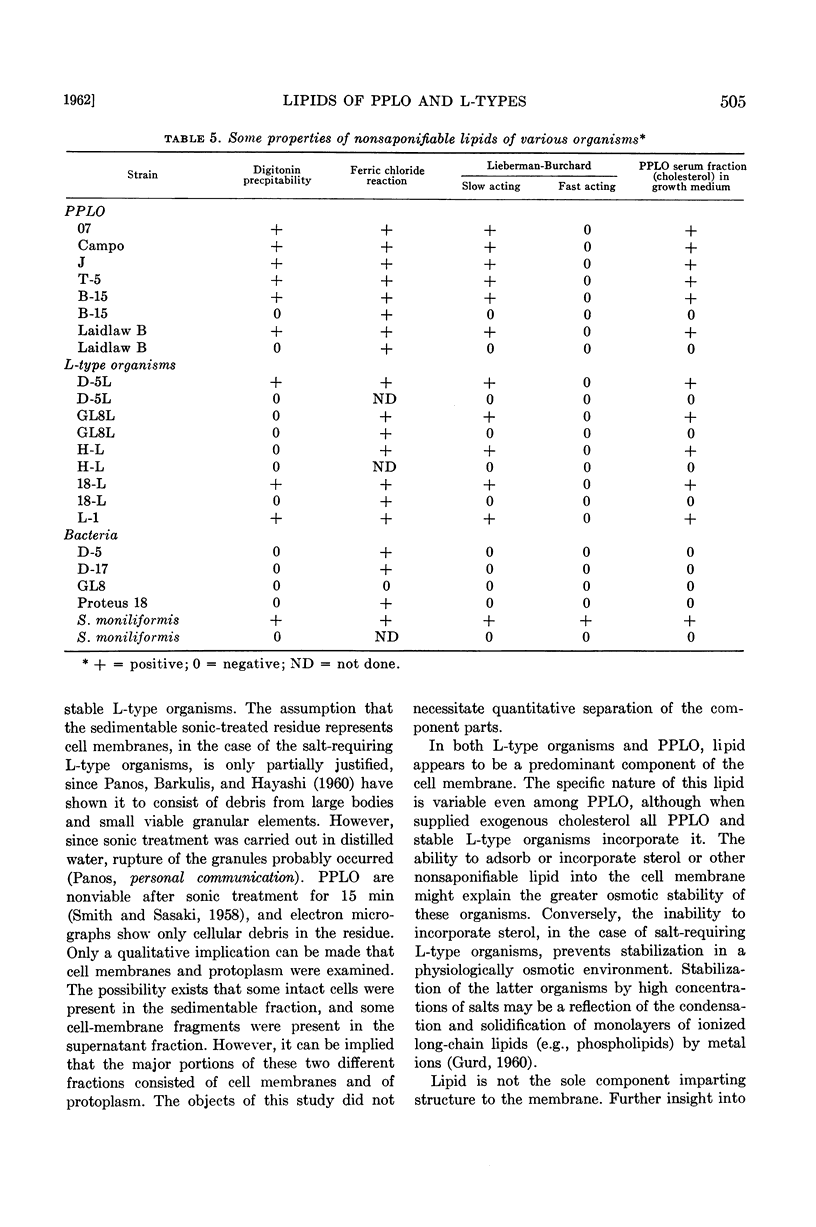
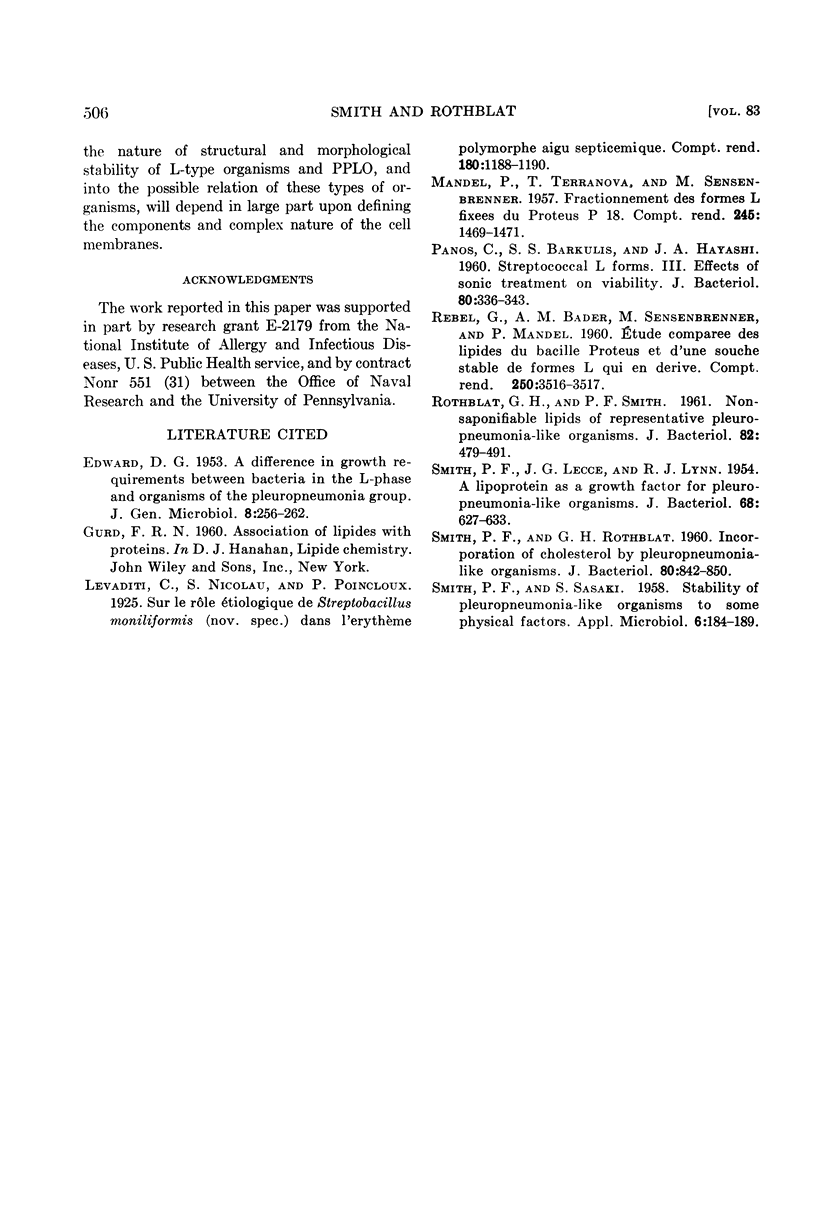
Selected References
These references are in PubMed. This may not be the complete list of references from this article.
- EDWARD D. G. A difference in growth requirements between bacteria in the L-phase and organisms of the pleuropneumonia group. J Gen Microbiol. 1953 Apr;8(2):256–262. doi: 10.1099/00221287-8-2-256. [DOI] [PubMed] [Google Scholar]
- MANDEL P., TERRANOVA T., SENSENBRENNER M. Fractionnement des formes L fixées du Protéus P 18. C R Hebd Seances Acad Sci. 1957 Oct 21;245(17):1469–1471. [PubMed] [Google Scholar]
- PANOS C., BARKULIS S. S., HAYASHI J. A. Streptococcal L forms. III. Effects of sonic treatment on viability. J Bacteriol. 1960 Sep;80:336–343. doi: 10.1128/jb.80.3.336-343.1960. [DOI] [PMC free article] [PubMed] [Google Scholar]
- REBEL G., BADER A. M., SENSENBRENNER M., MANDEL P. [Comparative study of the lipids of Proteus bacillus and a stable culture of derived L forms]. C R Hebd Seances Acad Sci. 1960 May 23;250:3516–3517. [PubMed] [Google Scholar]
- ROTHBLAT G. H., SMITH P. F. Nonsaponifiable lipids of representative pleuropneumonia-like organisms. J Bacteriol. 1961 Oct;82:479–491. doi: 10.1128/jb.82.4.479-491.1961. [DOI] [PMC free article] [PubMed] [Google Scholar]
- SMITH P. F., LECCE J. G., LYNN R. J. A lipoprotein as a growth factor for cortain pleuropneumonialike organisms. J Bacteriol. 1954 Nov;68(5):627–633. doi: 10.1128/jb.68.5.627-633.1954. [DOI] [PMC free article] [PubMed] [Google Scholar]
- SMITH P. F., SASAKI S. Stability of pleuropneumonialike organisms to some physical factors. Appl Microbiol. 1958 May;6(3):184–189. doi: 10.1128/am.6.3.184-189.1958. [DOI] [PMC free article] [PubMed] [Google Scholar]
- Smith P. F., Rothblat G. H. INCORPORATION OF CHOLESTEROL BY PLEUROPNEUMONIA-LIKE ORGANISMS. J Bacteriol. 1960 Dec;80(6):842–850. doi: 10.1128/jb.80.6.842-850.1960. [DOI] [PMC free article] [PubMed] [Google Scholar]


